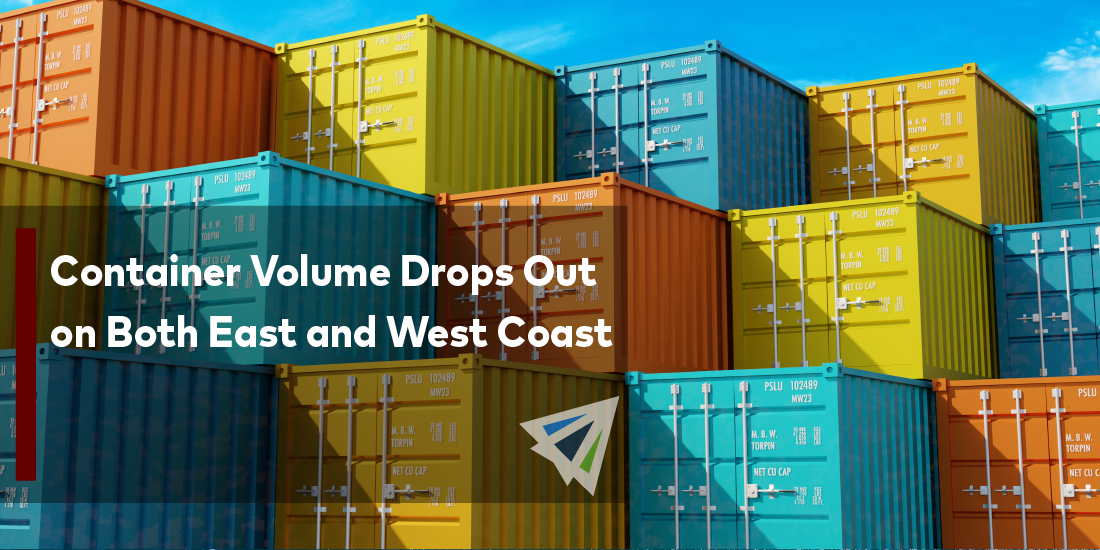Contract negotiations between the International Longshore and Warehouse Union and Pacific Maritime Association have remained incredibly slow, which is causing some serious concern among internationally trading businesses who import and export frequently through the West Coast ports. January container volume numbers reveal a rather drastic year-over-year dip in activity along the ports of Los Angeles and Long Beach.
The Port of Los Angeles reported a 16.1% decline year-over-year, with the facility processing 726,013 20-foot-equivalent unit (TEU) containers – a significant drop compared to 865,595 TEUs in the same month the prior year. The decline in activity has been happening for six months, and the port is only operating at 80% capacity. The port anticipates that February’s container volumes will also be soft, which is somewhat expected anyways due to the annual Lunar New Year in Asia when factories close for a two-week celebration. However, the main factor behind the recent declines is the uncertainty surrounding the labor contract.
The Port of Long Beach saw a 28.3% year-over-year decrease in container volume to 573,772 TEUs compared with 800,943 the previous year. The Port of Oakland saw a 15.6% decline, processing 163,058 containers compared with 193,205 in the same month in 2022. Finally, the Northwest Seaport Alliance that operates facilities in Seattle and Tacoma reported a 27.7% year-over-year decline as the complexes moved 213,095 TEUs compared with 272,291 a year ago.
Port Houston along the Gulf of Mexico saw a less-significant decline of 1% year-over-year, after more than a year of increases in activity, processing 319,990 TEUs compared to 323,427 the previous year. On the East Coast, Georgia’s Port of Savannah had one of the lowest activity months in the last few years, handling only 421,714 containers compared to 476,713 in 2022. Port officials blamed the weather for the decline in activity since 6 steamships were expected to arrive in Savannah by the end of the month, but they were all delayed. However, port officials still believe that the port is ready for significant growth in the future as it continues to invest in its infrastructure.
The South Carolina Ports Authority reported a 4.6% year-over-year decline in January to 215,238 TEUs from 226,515 in the same month a year ago. Meanwhile, the Port Authority of New York/New Jersey reports its TEU total later than the other ports, and in December, the giant East Coast complex reported a 20.5% year-over-year decline, processing 613,011 containers compared to 770,753 in 2021.
For a surprise twist, the Port of Virginia actually reported an over 9% increase in activity, handling 288,380 TEUs last month compared to 262,020 the year before – an increase attributed by port officials to the efficiency of trucks getting in and out of the port.
Many internationally trading companies are concerned about the slow speed at which negotiations are taking place between the Warehouse Union and Pacific Maritime Association and the International Longshore. Both sides continue to talk and are hopeful they’ll reach a deal in the near future, though it’s unsure as to when exactly that will be. Port officials in Los Angeles, Long Beach, and Oakland all expect lower than usual container volumes for next few months, and some business have already resorted to rerouting their orders to the Gulf or East Coast due to concerns about the aforementioned labor negotiations.
Despite these challenges ports are facing, they are setting their eyes on the future and investing in technological and infrastructure advancements. The Port of Oakland is modernizing it’s existing facilities. The Port of Virginia is working on increasing the efficiency of operations on the port grounds, and the Port of New York and New Jersey is trying to invest in technology that would increase their operational efficiency and container handling capacity. It’s unsure as to when all these improvements will be finished, and when labor negotiations will settle, but businesses are remaining adaptable in the meantime as they continue normal operations.
